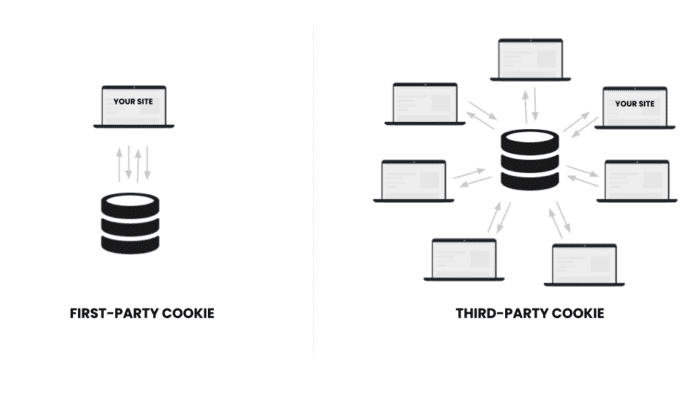2025 Update:
In a major turn of events, Google has announced that it is no longer planning to phase out third-party cookies in Chrome as originally intended. While privacy and data transparency remain key issues in the digital landscape, this reversal signals a continued reliance on third-party cookies—for now. We’ve left the original content below to provide context and insights that are still relevant for building a privacy-first strategy and diversifying your data sources.
In the last few months, it feels like every marketer has been talking about the phasing out of third-party cookies, which some call the “cookie apocalypse” or the “death of cookies”.
There is no doubt that the digital marketing landscape is changing (as it always does) and the phasing out of third-party cookies is another major change that will affect how brands use digital marketing to communicate with their target audience.
That being said, from a user’s privacy point of view this is a huge gain, and, although this means additional challenges for advertisers, the ones that play their cards right, might reinforce their relationship with consumers through trust and transparency.
Let’s take a look back on what cookies are and what the phasing out of third party cookies actually mean:

What is a third-party cookie? A third-party cookie is a piece of code created by domains other than the one a user visits directly, like a cookie for Facebook or Google Ads that you implement in your website. For now, third-party cookies are the basis of online advertising and ad targeting. For example, third-party cookies are often used to determine how ads are performing in cross-platform environments.
What is a first-party cookie? It’s also a piece of code stored by your domain that is used to improve user experience (language preferences, live chat support, log-in details, items in cart, previous visits, etc.) and understand how users interacted with your site.
Why is Google phasing out third-party cookies? In the past few years, there has definitely been a rise in privacy concerns from consumers. Third-party cookies are part of these privacy concerns as user data can potentially be shared with unknown entities. Therefore, phasing out third-party cookies aligns with the need for new privacy-first digital solutions, which Google has been working on through their privacy sandbox.
Nevertheless, the phasing out of third-party cookies also gives Google a stronger grip on the ad market as advertisers will rely ever more heavily on Google’s first-party data. That might also be the underlying reason behind their initiatives.
Who will be impacted by the phasing out of third-party cookies? Virtually every single company on the Web is powered by cookies and will be affected.
When will third-party cookies phase out? The phasing out of third-party cookies already happened on Safari and Firefox. Chrome, the most popular browser out there, announced that the phasing out will happen by 2022. In June 2021, Google announced that it was pushing back the phasing out of third-party cookies on its browser. This major change will instead happen in 2023.
What will the digital marketing landscape look like without third-party cookies? We can expect:
- Data monopoly from giants, tech companies and publishers.
- Inconsistency when it comes to tracking cross-platform and cross-property.
- Segmented digital advertising environment with specific audience and performance measurement model per advertising platform.
- Retargeting efforts will scale back and we might see a shift to more contextual targeting instead.
- The necessity to diversify marketing touchpoints through niche content and independent media outlets. Note that CPM might increase on premium placements due to high demand.
Are there alternative solutions to third-party advertising? The short answer is yes. Google and other tech giants are currently developing alternatives to advertising without third-party cookies. Google’s most promising option is called FloC (Federated Learning of Cohorts).
FloCs enable advertisers to target users based on their interests: it creates cohorts of thousands of users, with similar interests. Google actually expects to see at least 95% of the conversions per dollar spent when compared to cookie-based advertising.
Note: On March 23, 2021, AdExchanger reported that Google’s FloC initiatives will not be tested in countries where GDPR is in effect. According to this article, FLoC may not be 100% compatible with European privacy legislation. The situation is evolving rapidly, we are keeping an eye on it and will update this article when more information is made available.
Roadmap To Prepare For The Cookie-Less World
What steps can brands take to prepare for a smooth transition into the new world of online marketing?
1. Audit Your Tech Ecosystem and Digital Marketing Strategy
In order to prepare for the upcoming phasing out of third-party cookies, we would highly suggest that you make a full audit of your tech ecosystem and current digital strategy. Look into which cookies you are currently tracking on your site, are they all necessary? What are your data sources? What are the technical capabilities and limitations of the tech tools you are using? How do you currently activate this data? What are your current remarketing efforts?
By having a full understanding of your tech ecosystem you’ll be in a better position to assess your needs, understand your reliance on third-party data and identify gaps in your data collection strategy.
2. Focus On First-Party Data
If you can’t borrow data, you should focus on owning it. A trend that we’ve been seeing a lot more in recent years from advertising platforms like Google and publishers. These sites require users to sign in to access a variety of content and therefore have sole ownership of their audience data.
For advertisers, it means :
- Doubling down on loyalty-based tactics and loyalty program
- Building a first-party database, consider using a subscription or membership model
- Trying to acquire new email addresses (with consent) through high-value content (perks, promotional offers, exclusive content, etc.)
- Rethinking their marketing funnel to increase focus on acquisition tactics
3. Rethink Your Data Sources
Third-party data helps brands better understand who their target market is, their interest, affinities, etc. Therefore, we might see brands going back to more traditional data sources to continue to gather insights on their clients. This means going back to more traditional qualitative and quantitative data sources such as surveys.
But, this time around, brands have access to machine learning and artificial intelligence to better predict their audiences’ characteristics from samples.
4. Consider Investing In A Customer Data Platform
As you own more and more data, you’ll want to activate it through a customer data platform.
What is a customer data platform you ask? Here’s Hubspot’s definition: a CDP is a software that aggregates and organizes customer data across a variety of touchpoints. The data is then centralized in individual customer profiles and available to other softwares.
You might think it’s similar to a Data Management Platform (DMP) or a Customer Relationship Management platform (CRM) but they are key differences:
A data management platform essentially relies on third-party data and anonymous entities like devices and IP Addresses. It’s almost exclusively used for digital advertising purposes and therefore retains information for a short period of time.
A Customer Relationship Management platform tracks a prospect’s interaction with your company through manual entry. You would mostly find information such as name, email, etc.
A Customer Data Platform also works with personally identifiable information like a CRM but also works with anonymous entities. Therefore, CDPs work with anonymous and identifiable information which helps break data silos for a better cross-channel activation.
For more information on Customer Data Platform, we’d recommend taking a look at Hubspot’s article on the subject: What’s a Customer Data Platform? The Ultimate Guide to CDPs
5. Update Your Privacy Policy And Create A Cookie Policy
As the current digital landscape shifts towards privacy-first marketing solutions, it’s important to review your current privacy policies for increased transparency. You might also want to put into place a cookie policy that explains what cookies are active on your website, what user data they track, for what purpose, and where in the world this data is sent. A cookie policy is already required in the GDPR (Europe) and CCPA (California).
6. Add A Cookie Consent Banner On Your Site
Also, take into consideration that the Canadian and Quebec governments are currently looking into passing new legislation related to data privacy online: Bill 64 (Québec) and C-11 (Canada). These bills will require brands to get their users’ consent to collect, use, communicate sensitive personal information. Therefore, when these bills are adopted, Canadian brands we’ll see the need for a consent management platform or a cookie consent banner on their site.
Note that you should consult a law firm for legal advice.
Final thoughts
There is no doubt that the upcoming years will bring challenges for digital marketers and advertisers. A lot of changes are coming on the technical, legal and operational front and brands need to be ready to face the music. Hopefully, this article gave you actionable items that will help your business embrace the cookie-less world.
For additional information, feel free to watch our webinar “Understand and Embrace the Cookie-Less World” with legal expert, Elisa Henry.
Note for Canadian brands: the Interactive Advertising Bureau (IAB) in Canada published a whitepaper “Moving Towards Cookie Independence” and we highly recommend taking a look, learn more.
Subscribe to The Shift Factor
Our newsletter keeps you in the know on marketing’s biggest shifts and real examples of brands adapting.
ABOUT THE AUTHOR
Gael Cottet
Gael is the Marketing Analytics Director at Bloom.




Share this: